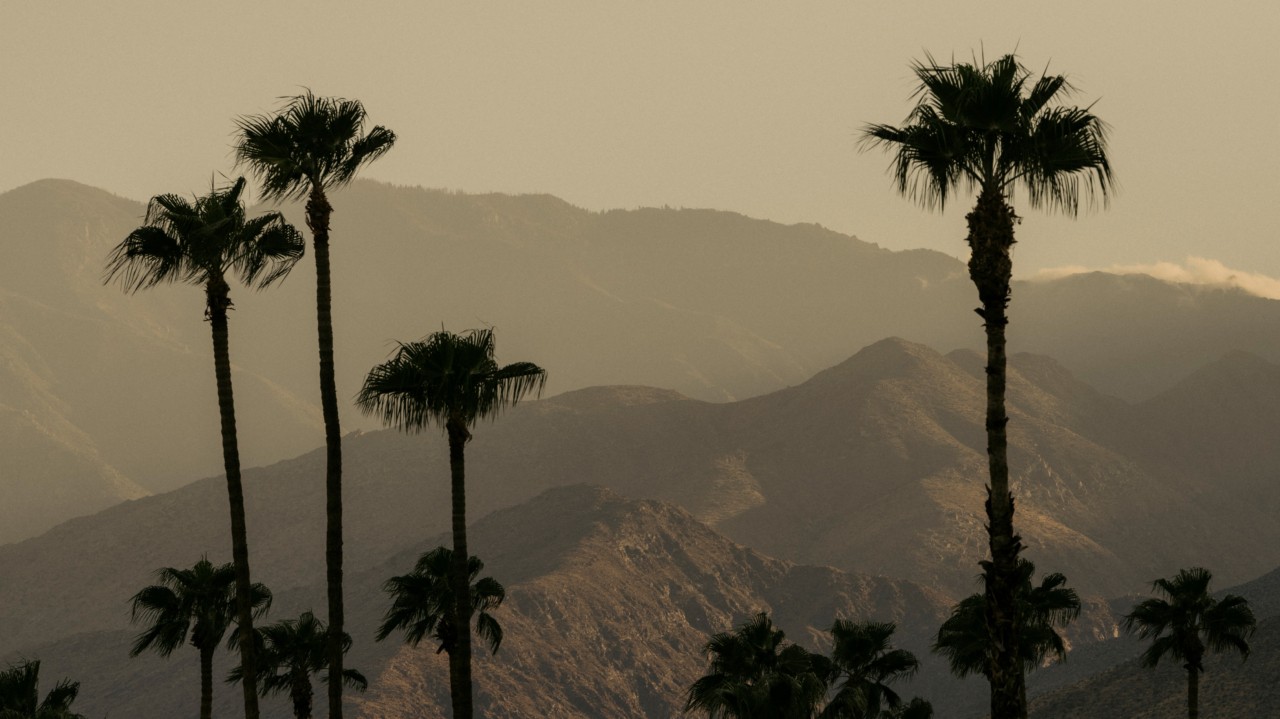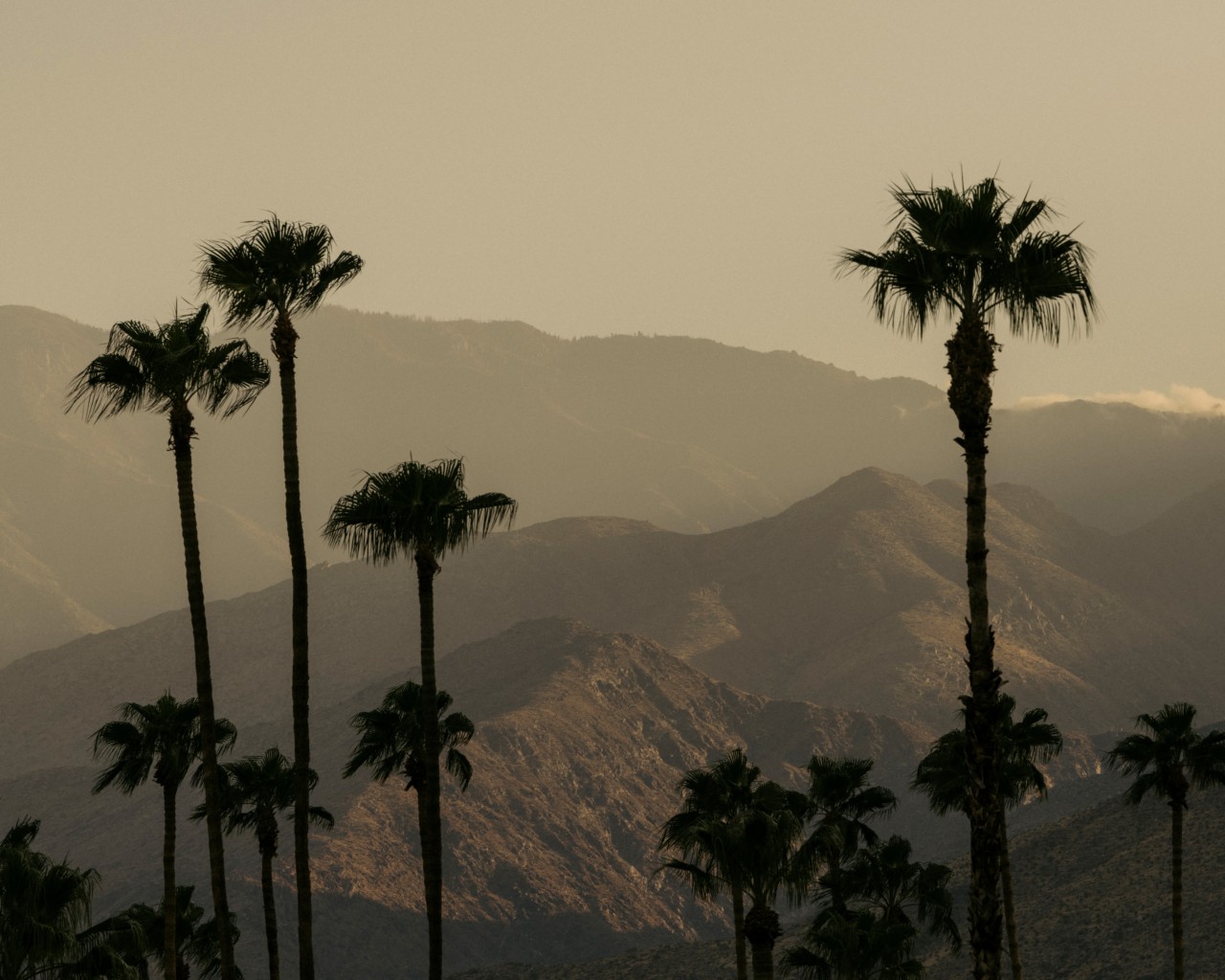

Photograph by by Robert Rieger / Connected Archives
Words by Leila Latif
This Sunday, March 2, marks the 97th Academy Awards. As you read this, ornate gowns are being steamed, red carpets are unfurled, and cheesy acceptance speeches scribbled onto cue cards in preparation for the big night.
But the 2025 Oscars will also be markedly different from any past iteration. Just over a month ago, Los Angeles—the birthplace of so much of the movie magic the Academy celebrates—was devastated by a series of record-breaking wildfires. At least 29 people were killed and thousands were forced to evacuate their homes, many never to return. Large swaths of forests, crucial infrastructure, and historic buildings were reduced to piles of ash. The city’s air quality plummeted and toxic runoff threatened—and continues to affect—the water supplies in a state already grappling with severe and extended periods of drought.
Hollywood is just 20 miles from some of the most damaged neighborhoods. But while the flickering crimson skies have returned to placid blue, the grim reality of the climate crisis lingers. Many are left wondering: What will Hollywood do with this terrible spotlight?
The climate crisis is no distant disaster; it blazes on the periphery of the Dolby Theatre, where film’s biggest stars congregate year after year to celebrate cinema’s greatest achievements. The elegant art deco building still stands, but only because the heavy winds did not sweep the January inferno in the theater’s direction. Now, with the dawn of a new administration that ordered the federal government to roll back key environmental pledges and regulations, there is no room for complacency. It’s time for the film industry to inspire an urgent call to arms and offer a searing critique of the human actions that have already caused so much environmental damage—and offer us a way through.
These crises are the result of years spent looking the other way. And though the 2025 Oscar nominees are largely made up of films shot in 2023 and released in 2024—well ahead of the LA wildfires and Trump’s return to the White House—the ingredients that got us here have been on full display, and readily accessible to filmmakers, for long before. Against a backdrop of rising global temperatures and sea levels, collapsing biodiversity, and worsening extreme weather events, stories being told on one of entertainment’s biggest stages feel disquietingly safe and too detached from our collective future.
“As the toxic ash cleanup continues in Hollywood’s backyard, Best Picture nominees avoid the wider topography that connects corporate greed, colonialism, and environmental degradation.”
In troubled times, audiences value escapism—and the audacity of Emilia Perez, sugary aesthetic of Wicked, and ludicrous body horror of The Substance offer some respite from the storm. Still, the narratives playing out in the majority of nominated films are strangely tame and disconnected from the existential crisis we are living through.
Best Picture nominees have historically often been in opposition to the tone of the time. While the Iraq War raged, the Academy gave its highest accolades to the musical bonanza Chicago, in which two rival murderesses join forces to become famous. As the world was ravaged by COVID-19, top honors went to Nomadland, a gentle testimony to community and self-actualization. And during President Donald Trump’s first term, the Oscar in 2019 went to the schmaltzy race relations nonsense that was Green Book.
It’s worth noting that phenomenal films like Parasite, Casablanca, The Godfather, Moonlight, and The Apartment have also—and deservedly—won Academy Awards, and spoken to societal ills around war, gender, and inequality. But time and time again, the Oscars as a whole have failed to meet the moment.
This year, it’s telling that the colonial dystopia of Dune Part Two, where water is a rare commodity, and Nickel Boys, which confronts the legacy of America’s sordid and racist past, are viewed as the two Best Picture nominees least likely to win its top prizes. The Best Director category is once again dominated by white male filmmakers from the Global North, and the continued lack of diversity in the most powerful positions in cinema means that on-screen stories continue to exclude the voices of the Global South, Indigenous peoples, and those worst impacted by the effects of climate change.
In other words: The industry’s status quo is limiting the potential for transformative, radical storytelling. As the toxic ash cleanup continues in Hollywood’s backyard, Best Picture nominees avoid the wider topography that connects corporate greed, colonialism, and environmental degradation. Many of them, despite their artistic merit, focus instead on the plight of the individual, honing in on the inner turmoil of their protagonists.
“One day, the Best Picture slate could not simply ignore or languish in destruction, but rather dare to imagine life after the storm.”
But what if Hollywood took this moment to offer a narrative of possibility? It’s time we create—and celebrate—stories that cut to the heart of the climate crisis with clear-eyed critique and a sense of purpose; films that move us beyond despair and into hope. After all, the Academy Awards celebrate the ability of stories to shape our cultural imagination. To win an Oscar is to solidify your work in the greater cinematic pantheon, reflecting not only the tastes of the Academy but that of the wider culture. Cinema is both a mirror and a catalyst for change that informs what people, plights, and principles we value—and the Oscars can honor that by recognizing films that move us toward the world we seek to create.
One day, the Best Picture slate could not simply ignore or languish in destruction, but rather dare to imagine life after the storm. What if thrillers unfolded in a world powered by clean energy? What if dramas depicted the marvelous beauty of ecosystems restored? What if love stories emerged from communities re-enchanted with one another’s humanity? These are the stories that could inspire a future worth fighting for.
The good news is that there are already guidelines in place to help inform more honest filmmaking. The “Climate Reality Check,” a climate-inspired iteration of the Bechdel test created by Matthew Schneider-Mayerson, Carmiel Banasky, Bruno Olmedo Quiroga, and Anna Jane Joyner, states that films should acknowledge the reality of climate change—and that characters should operate with the knowledge of it.
It’s easy to see how using the Climate Reality Check to stress-test script ideation and film productions could shift the discourse. This year’s Oscar nominee with the highest Climate Reality Check score is the animated film The Wild Robot, set in a near future when the entire globe has been transformed by climate change. Agriculture is performed in huge biodomes; whales swim over an underwater Golden Gate Bridge; and an interspecies community of animals finds a way to thrive, thanks to help from a maternal robot.
The tragedy Hollywood faced less than two months ago could be a turning point; an opportunity to harness the untapped potential of storytelling and visualize just how much is at stake. It’s a chance for films to go beyond entertainment and distraction and be a force for change. Regardless of whether Wicked, Anora, or The Brutalist takes home the most prizes; or Ariana Grande or Colman Domingo are deemed best dressed, the real triumphs will come later: When Hollywood functions not just as entertainment, but as a force for change—then the Oscars can celebrate not just great films, but a better future for us all.
It’s Hollywood’s Hottest Night, but the Planet Is on Fire